I’m convinced that when people pray a devotional litany devoutly, God opens a sacred window of grace into their hearts that is very spiritually fruitful and brings great peace to believers.
Litanies are some of the most beautiful prayers of the Church and have quite a long and remarkable pedigree that will fascinate you. It’s almost as if God wanted His people to pray litanies. But what exactly is a litany, and what is its origin?
Fundamental Concept
In common parlance, a litany is just a list of things. We often say that a person has “a litany of complaints” or a “litany of accomplishments” when we want to indicate that there is a lot to be addressed.
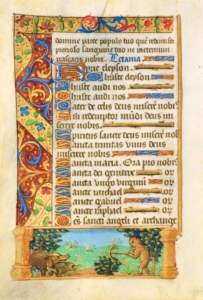 The basic concept of a religious litany is found in its repetitive acts of praise or supplication. The Greek root of the word “litany” is lité which simply means “entreaty”. In its most fundamental understanding, then, we pray litanies to ask God for help!
The basic concept of a religious litany is found in its repetitive acts of praise or supplication. The Greek root of the word “litany” is lité which simply means “entreaty”. In its most fundamental understanding, then, we pray litanies to ask God for help!
Catholics are often accused of “babbling on like the pagans” (Matt 6:7) when we pray repetitively, but the simple fact of repeating prayers is not a pagan act. Praying continuously, repeatedly, and perseveringly is part of the Church’s spiritual DNA.
Don’t forget that St. Paul exhorts us to “pray without ceasing” (1 Thes 5:16), and the Lord Himself insisted that prayer does not bear fruit unless it is persevering prayer (Matt 7:7; Lk 11: 5-10; 18:1-4, etc.) But how can we pray perseveringly without repeating ourselves?!
The ancient practice of praying litanies is a good example of this truth, and it’s clear that the Church received this gift of prayer from the ancient Jewish Temple worship, which was based in the recitation of the psalms and other Old Testament scriptures.
For example, the whole of Psalm 136 is an extended litany of praise:
Praise the LORD, for he is good / for his mercy endures forever;
Praise the God of gods / for his mercy endures forever;
Praise the Lord of lords / for his mercy endures forever.
The Psalm goes on for 26 verses like that. The second half of each verse is a repetitive refrain in praise of God’s mercy. It was meant to be prayed by the choirs of singers chanting the first and second parts of each verse back and forth to each other.
(I once knew a priest who said he chose this psalm for his biblical Hebrew exam in seminary because he didn’t have to memorize the second part of every verse! Clever fellow. The professor was not amused.)
Intense Supplication
The Book of the Prophet Daniel, Chapter 3, contains a similar psalm of praise that goes on for forty full verses. Hananiah, Azariah, and Mishael sang it when they were thrown into the white-hot fire by King Nebuchadnezzar for refusing to worship false gods. As we know, the God of Israel heard their prayer and rescued them from the fire.
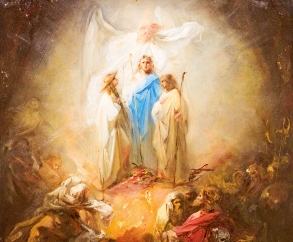 In fact, this character of supplication is what got the litany established as a fundamental devotion of the Christian Church. In the history of the Church, for example, litanies were often used for communal prayer and petition in times of calamity.
In fact, this character of supplication is what got the litany established as a fundamental devotion of the Christian Church. In the history of the Church, for example, litanies were often used for communal prayer and petition in times of calamity.
In the early Church, litanies were synonymous with public processions. We know, for instance, that St. John Chrysostom led his people in a solemn public procession asking for God’s mercy on the people after a catastrophic earthquake shook the city of Constantinople in 398 AD.
Another fascinating example comes from the year 590 AD when Pope St. Gregory the Great ordered a procession of the Roman people at a time of pestilence due to the flooding of the Tiber River.
It was called a Seven-Fold Procession in which he asked the faithful to walk in pilgrimage from seven different churches around the city to converge on the Basilica of St. Mary Major where the pope offered Mass. The people carried religious images and sang psalms as they walked.
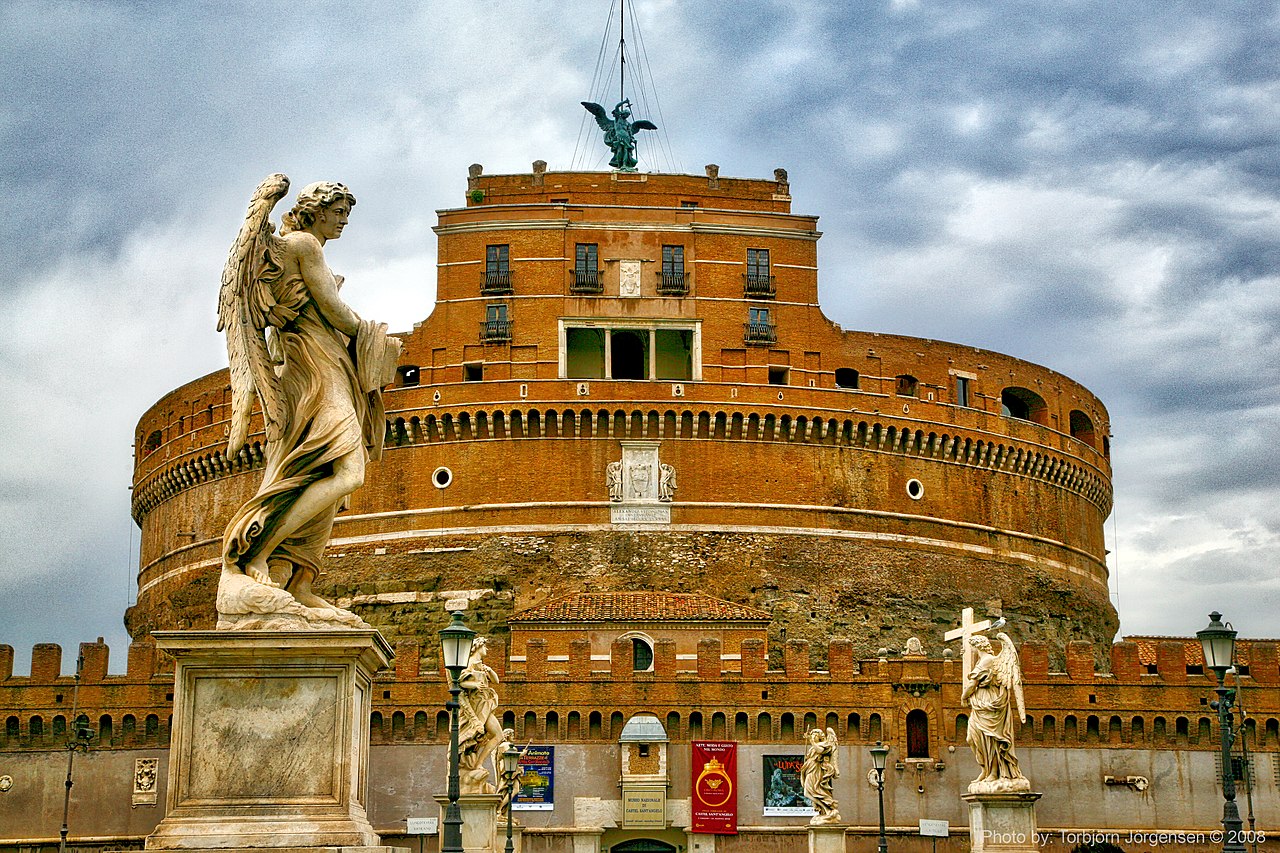
The Destroying Angel
God honored the prayers of this famous procession/litany too. It is said that when the pope returned from St. Mary Major to his residence at the Vatican, he passed the gigantic castle known as the Tomb of Hadrian, just across the Tiber River from the city.
When he looked up, he – and all those with him – witnessed an amazing scene. At that very moment, a great angel dressed in armor and holding a sword is said to have suddenly appeared on top of Hadrian’s Tomb. The angel was a warrior, but his action was not to draw his sword for battle. He was, rather, sheathing it as if he had just finished battle. The meaning became clear the next day.
God had heard the litany prayers of the people of Rome. He sent a magnificent angel (whom most interpreted as St. Michael the Archangel) to end the plague, and when his job was done he put his sword away. That very day the plague began to abate, and soon it disappeared altogether.
Litanies are powerful forms of prayer!
The fortress tomb of Hadrian has been called Castel Sant’ Angelo (Castle of the Holy Angel) ever since. There are ten angel statues on the bridge leading to the castle (creations of Bernini, by the way), but the key figure stands on top of the castle in commemoration of the event of 590 AD.
Liturgical and Devotional Usage
Did you know that the Catholic liturgy (Holy Mass) contains one short but ancient litany? It is the Kyrie that I wrote about in a previous newsletter.

As with psalms of the Temple liturgy, this supplication is prayed at Mass in a back-and-forth style that we call antiphonal; namely, one person, in this case the priest, recites the first part (called the Verse or antiphon) and the congregation prays the Response.
This is why you often see V. and R. on prayer cards and prayer books. Verse and Response – aka, a litany!
Since the litany proved to be an immensely popular form of prayer, litanies proliferated over the centuries, especially during the Middle Ages, such that the popes had to clamp down on them! (Proving once again that if something can be done, Catholics will usually find a way to do it too much!)
Pious people and creative clerics wrote litanies in supplication for every conceivable human need, but when these litanies began to work their way into the Church’s official prayer, the Mass, the authorities began to put a limit on devotional enthusiasm.
In 1601 pope Clement VIII forbade the publication any litany other than the traditional Litany of Saints and the Litany of Loreto to Our Lady. The Church has in recent centuries expanded the list of “approved” litanies to six:
(Each of these is linked to the Wikipedia page for the respective litany if you wish to learn more about them.)
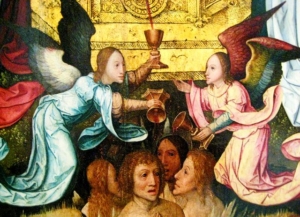 This does not mean that other litanies cannot be prayed by the faithful for devotional purposes – in fact, there are probably hundreds of different litanies out there! Papal approval just wisely limits the official and approved liturgies to these time-tested and magnificent prayers that have been embraced in the heart of the Church for centuries.
This does not mean that other litanies cannot be prayed by the faithful for devotional purposes – in fact, there are probably hundreds of different litanies out there! Papal approval just wisely limits the official and approved liturgies to these time-tested and magnificent prayers that have been embraced in the heart of the Church for centuries.
The only one of the above six that appears in Church liturgies to this day is the Litany of Saints, which you will hear during baptisms at the Easter Vigil (next week!) and at priestly ordinations. It is incredibly consoling, inspiring, and beautiful.
One more point: nowadays litanies have journeyed on from their original charism as prayerful processions in times of disaster. They are almost exclusively devotional and theme-oriented as the above litanies indicate, but they have never lost their basic character of lists.
The richness of the Christian Tradition has augmented our litanies to such a degree that they have become incredible lists of
- Traditional and creative titles,
- Mystical descriptions,
- Biblical metaphors and allusions, and
- Imaginative details about the Life of Christ and His beloved saints.
You will see all these qualities in the litany below. Please also take time to explore the links above if you are not familiar with these precious gems of spirituality.
The Precious Blood Litany
Speaking of magnificent litanies, the Precious Blood Litany is not part of the Palm Sunday liturgy, but it is perfectly fitting for private prayer on the day when we read the Passion of Our Lord Jesus Christ and commemorate the shedding of the Precious Blood of the Paschal Lamb for our sins.
A number of items to note about this litany before we conclude.
- Remember that, while anyone can pray a litany privately, litanies are meant to be prayed communally, which most corresponds to the Verse / Response format of the prayer.
- The first section of the litany is addressed to the Holy Trinity and asks God to hear us and have mercy on us.
- The following long and striking list of attributes of the Precious Blood is the fruit of the Church’s centuries-long reflection on the Crucifixion of our Lord.
- The litany ends with a traditional appeal to the Lamb of God (which actually ties us back to the same appeal in the Mass) and concludes with a final prayer particular to this litany.
Let this litany, dear friends, draw you into the mystery of Christ’s saving Sacrifice which we will contemplate and live most intensely during this Holy Week.
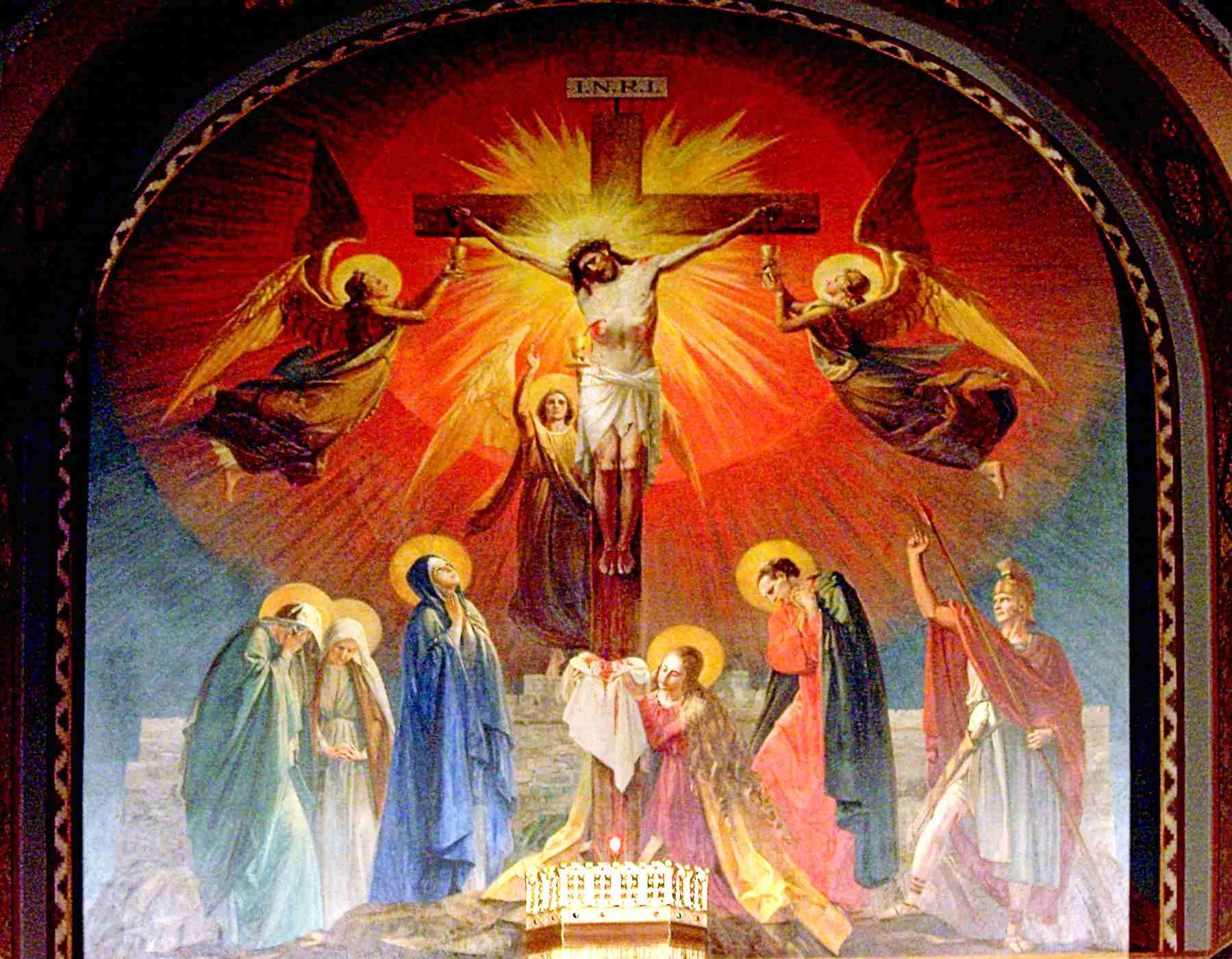
The Litany of the Precious Blood of Jesus
Lord, have mercy. R. Lord, have mercy.
Christ, have mercy / Christ, have mercy.
Lord, have mercy / Lord, have mercy.
Christ, hear us / Christ, hear us.
Christ, graciously hear us / Christ, graciously hear us.
God the Father of Heaven / Have mercy on us.
God the Son, Redeemer of the world / Have mercy on us.
God, the Holy Spirit / Have mercy on us.
Holy Trinity, One God / Have mercy on us.
(Response for all the following petitions: Save us.)
Blood of Christ, only-begotten Son of the eternal Father,
Blood of Christ, Incarnate Word of God,
Blood of Christ, of the New and Eternal Testament,
Blood of Christ, falling upon the earth in Agony,
Blood of Christ, shed profusely in the Scourging,
Blood of Christ, flowing forth in the Crowning with Thorns,
Blood of Christ, poured out on the Cross,
Blood of Christ, price of our salvation,
Blood of Christ, without which there is no forgiveness,
Blood of Christ, Eucharistic drink and refreshment of souls,
Blood of Christ, stream of mercy,
Blood of Christ, victor over demons,
Blood of Christ, courage of Martyrs,
Blood of Christ, strength of Confessors,
Blood of Christ, bringing forth Virgins,
Blood of Christ, help of those in peril,
Blood of Christ, relief of the burdened,
Blood of Christ, solace in sorrow,
Blood of Christ, hope of the penitent,
Blood of Christ, consolation of the dying,
Blood of Christ, peace and tenderness of hearts,
Blood of Christ, pledge of eternal life,
Blood of Christ, freeing souls from purgatory,
Blood of Christ, most worthy of all glory and honor, R. Save us!
V. Lamb of God, who taketh away the sins of the world, R. Spare us, O Lord.
V. Lamb of God, who taketh away the sins of the world, R. Graciously hear us, O Lord.
V. Lamb of God, who taketh away the sins of the world, R. Have mercy on us, O Lord.
V. Thou hast redeemed us, O Lord, in Thy Blood. R. And made us, for our God, a kingdom.
Let us pray.
Almighty and eternal God, Thou hast appointed Thine only-begotten Son the Redeemer of the world and willed to be appeased by his blood. Grant, we beg of Thee, that we may worthily adore this price of our salvation and through its power be safeguarded from the evils of the present life so that we may rejoice in its fruits forever in heaven. Through the same Christ our Lord.
Amen.
Links to the Antiphonal Recitation of the Precious Blood Liturgy
EWTN shorter version, 4:41
EWTN longer version, 8:25
Photo Credits: Feature, Head of Christ on Cross (Robert Allmann, Pixabay); Three young men (Nikolay Lomtev, Public domain); Castel Sant’ Angelo (Torbjorn Toby Jorgensen); Illuminated MS (French, 1500, Public domain); Angels holding chalice (Jean Bellegambe, Public domain); Crucfixion scene (photo by author, taken at Precious Blood Monastery, Brooklyn, NY).
———-
[Note: This article is a reproduction of the Sacred Windows Email Newsletter of 4/2/23, so it does not end with the regular Soul Work section. Please visit our Newsletter Archives.]
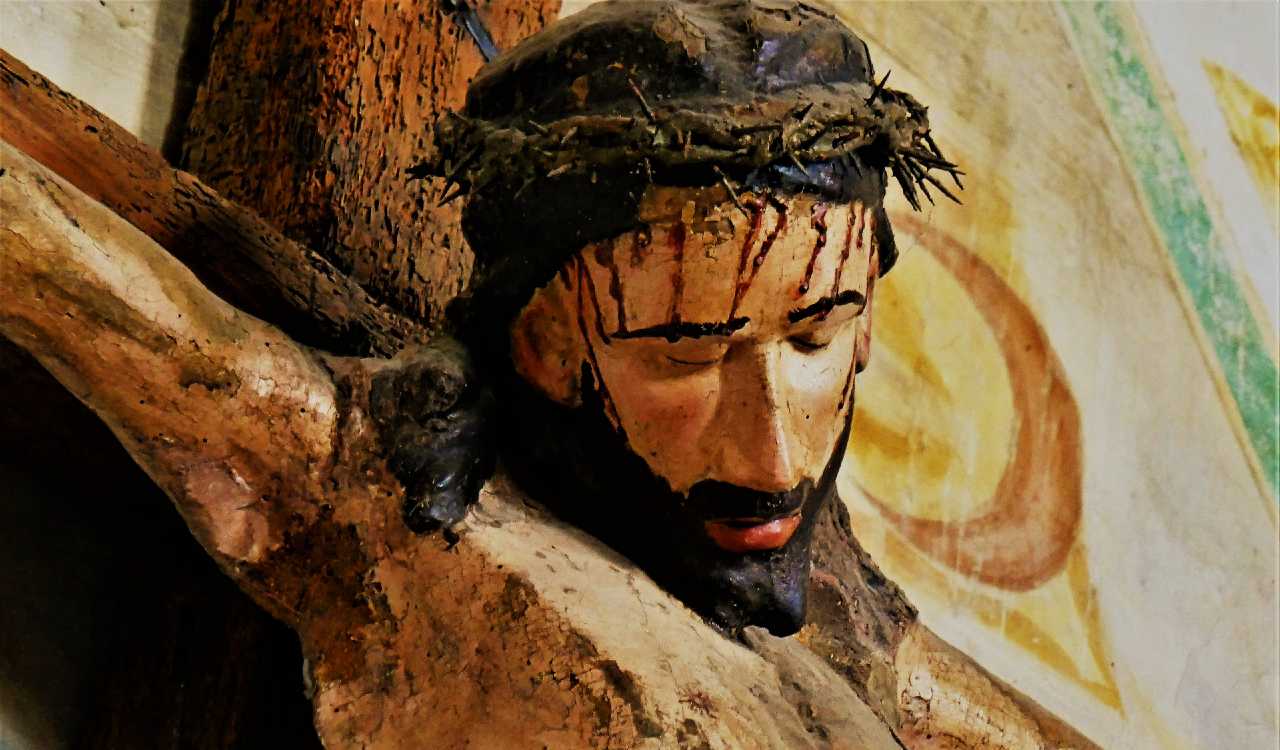
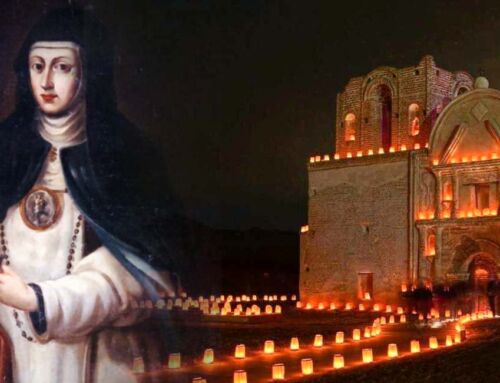

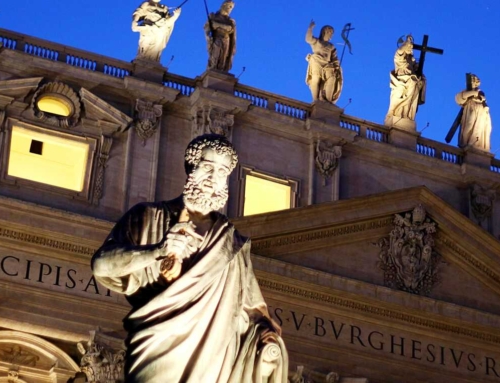
[…] but it came to mean a list of praises spoken by a preacher or orator in public – a bit like our litanies, but always by way of preaching. Proclus was only one of a myriad of preachers to speak in such […]